The RU6 always sounds full bodied but it’s not overly heavy. At the same time, I would not recommend using it with overly warm and bassy IEMs. The low end is already very present, and it doesn’t need an extra boost. Soundstage-wise the RU6 scores well in both width and depth and especially the mid layering here is remarkable.
In the mid-section the lower mids are a little more to the back while the vocals are presented slightly more forward, yet not too much. It gives the vocals and the mids a nice energetic feeling without drawing all the attention to them. The separation in the RU6 is very good, but it overall it to me isn’t the most airy or spacious sounding DAC/AMP, and that results in a more intimate presentation.
Some reviews claim that the RU6’s low end doesn’t stretch very far, but I tend to disagree with that. Combine it with a capable IEM and you will be impressed by the sub rumble. I do agree that the precision, tightness, and clarity in that region isn’t the best, but there’s certainly a good low-end presence. The top end also extends well, but less far than the lows. In general, the note extension overall is good and on par with the price tag, but high-end units like the Musician Aquarius show what the R2R technology really is capable of.
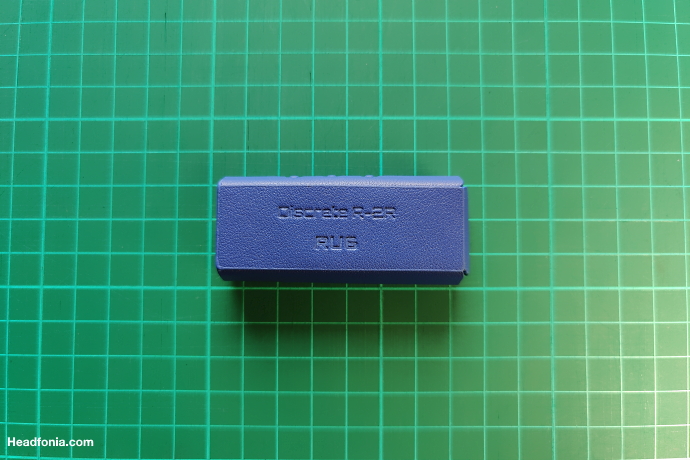
Sound – Classics
Bass is always full and reaches down really low when needed. The layering is good but it isn’t the fastest and tightest kind of bass. Especially the subbass regions suffers from this, and as such it can sound a bit loose at the very low end. Bass is always punchy and present and warmer in presentation. It’s not a bass heavy sound, but it certainly isn’t bass shy either and for the real “neutral sound type” fans out there, its presence already might be a bit much.
The mid section is divided. The lower mids section is somewhat more in the back while the upper mids and vocals have a more forward presentation. It however works together delivering an energetic sound. You get good depth, layering and precision, with excellent separation and clarity. As said, there is room form improvement for airiness. The presentation is naturally smooth.
The treble section is clear, energetic and extends just far enough. It isn’t the most treble energetic DAC/AMP but it perfectly matches with the mid and bass smoothness. Treble will not offend anyone and it always is mature and polite.
Sound – Conclusion
The Cayin RU6 is easy to listen to and the R2R tech gives it that typical clarity, precision, and separation. The RU6 sounds full but natural, with impactful bass, smoother mids and a clear inoffensive top end. It’s very easy on the ears but it’s also musical.
The big question is how it performs against the competition at the same price point, knowing that the RU6 is the only R2R tech dongle in the comparison. Let’s find out!
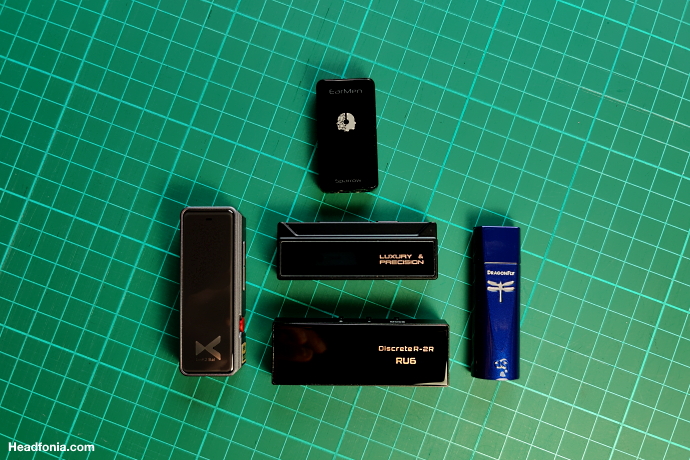
Comparison
The comparisons were done with my laptop with ROON as source and the Unique Melody MEXT as IEM in balanced mode where possible. All units were used with an AudioQuest Jitterbug FMJ.
The EarMen Sparrow ($199) is smaller in size and sports a 2.5mm balanced output where the RU6 has a 4.4mm one. The Sparrow is an MQA renderer, and it uses an ESS SABRE ES9281PRO chip. The Sparrow’s bass is bigger and less controlled than the RU6’s bass. Both units share a full bodied and impactful sound with a smoother and warmer presentation. The vocals in the Sparrow are more to the back and they also sound sifter, more laid back. The RU6 has the better detail precision and note extension. The top end of both units is comparable, though that of the Sparrow is a little more energetic and present.
The Luxury & Precision W2 ($299) is one of the most popular dongles on the market, it uses a double CS43198 chip. Compared to the RU6 it – without any filters and in NOS mode – sounds slower, softer and it just can’t reach the precision level of the RU6. They are comparable for what body (except for sub rumble which is bigger in the RU6), impact, soundstage, and spaciousness are concerned, but the RU6 is of a stronger technical level than the W2. The RU6 sounds more energetic and has a more vocal forward presentation than the softer, mellower W2. Both units are very musical in their own way. If you want the best technical performer, the RU6 is your best option. If you want something softer with sweeter vocals, the W2 is your to go to unit.
The xDuoo Link 2 Bal ($149) is the cheapest dongle in this comparison and it comes with the most accessories of all these dongles. The xDuoo Link 2 Bal uses a dual CS43131 DAC chip. The xDuoo is more neutral in presentation with a more linear and balanced sound. It doesn’t have the warmth, fulness and bass presence of the RU6, and it is cleaner. The RU6 on the other hand has the better detail, note extension and sound stage width/depth. The xDuoo’s layering and positioning is at a lower level, but it does have more impressive left-right stereo imaging and top end energy. The sub bass presence is better in the RU6, but the sub bass precision and tightness are better in the xDuoo. We will feature the full review of the Link 2 Bal on Headfonia soon.
Unfortunately, I don’t have the Moondrop Moonriver 2 here with me to compare the RU6 to, but we do have the old almighty AudioQuest DragonFly Cobalt. The Cobalt ($299) uses an ESS ES9038Q2M DAC chip and it does MQA. AudioQuest doesn’t offer a balanced dongle yet. The Cobalt shares the same body, fulness and presence of the RU6. The RU6 is softer are more relaxed sounding than the tighter, speedier Cobalt. This is mostly audible in the midrange section. The bass and vocal presentation are very similar, and the same goes for the treble region.
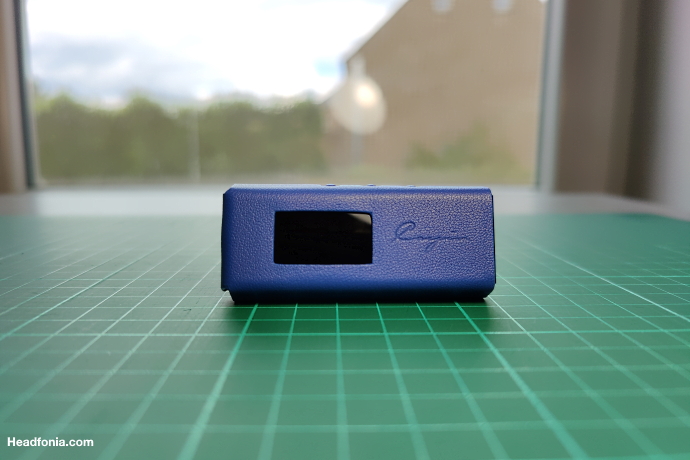
Conclusion
The Cayin RU6 DAC/AMP dongle has a very musical, natural and analogue like presentation. That combined with the strengths of the R2R technology, makes it a very interesting dongle for a lot of headphiles.
The RU6 is a full bodied and smoother sounding DAC/AMP, where the bass and more forward vocals have prominent roll. The RU6 is easy on the ears and it always has great clarity and a pitch black background. The volume control is one of the very best we have experienced with all of the dongles so far.
Page 1: Intro, Cayin, RU6
Page 3: Sound Pt. 2, Comparisons, conclusions





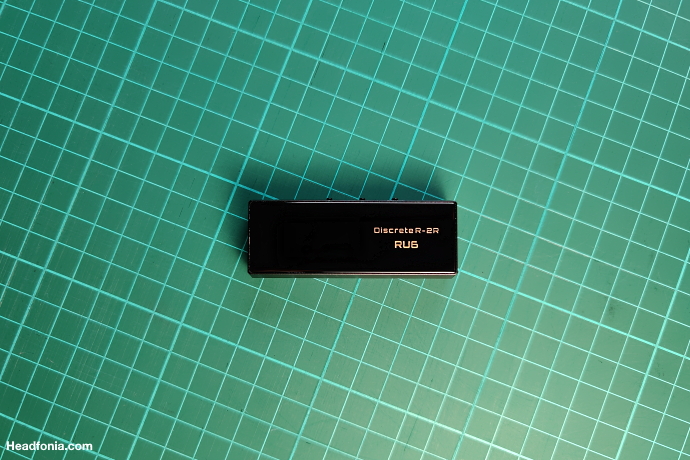
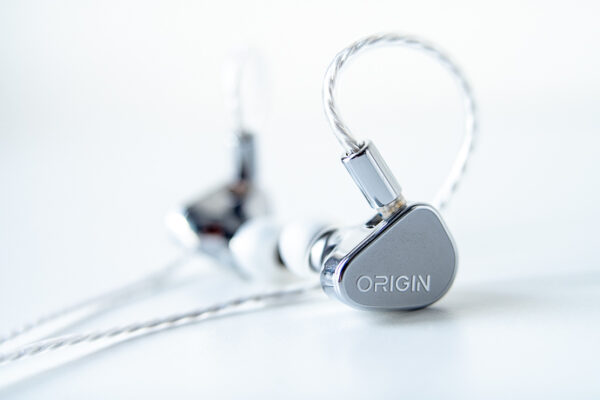
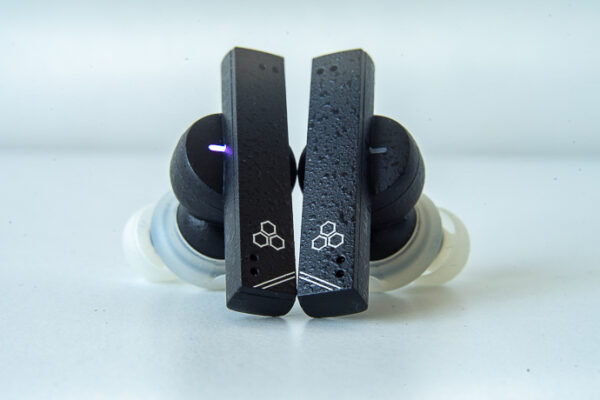
Rich
Best money I ever spent in audio. It can go toe to toe in balanced mode Vs my desk rig of 4k. Also r2r with Gan amp too.
Erwin
Thanks for another splended review. Do you think the RU6 will be a good match with the Campfire Holocene?
Lieven
We don’t cover or discuss about CA on Headfonia for now. Sorry.
Peter
I am enjoying my RU6…
iPad Pro > RU6 > Grado 325
Good pairing 🙂
James Ballantine
Thanks for the informative review I use the Cayin RU6 with a Motorola G200. There is no problem with using Tidal, my main streaming source. It is an excellent audio device.
slh
From your review i understand that the Ru6 has bass roll but still more bass than xDuoo Link 2 Bal? im confused..
Lieven
Hi. Those are not the same thing (behaviour vs qty) 😉